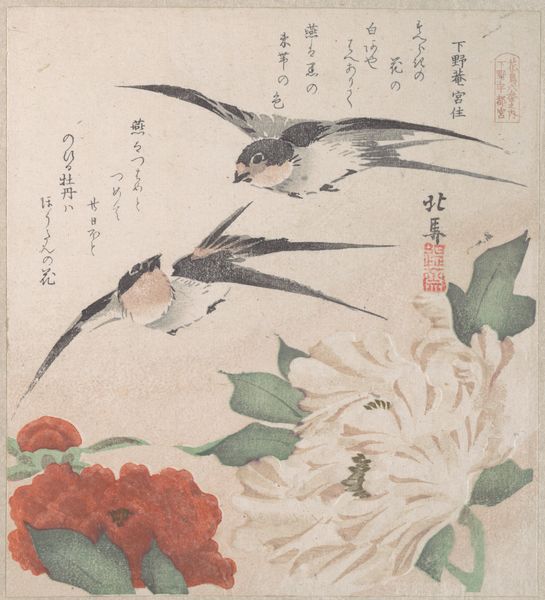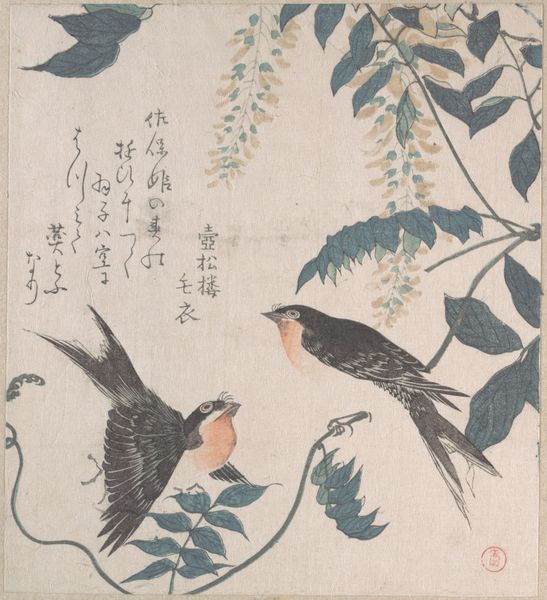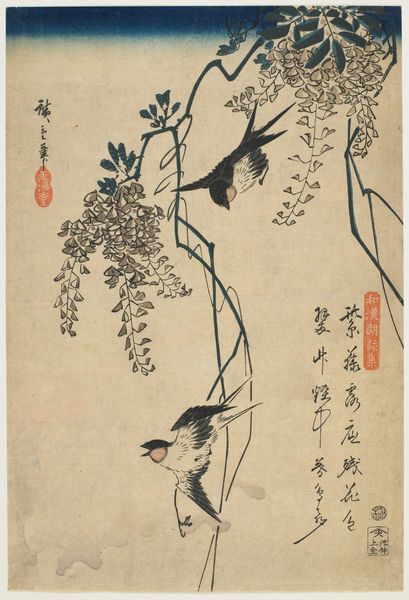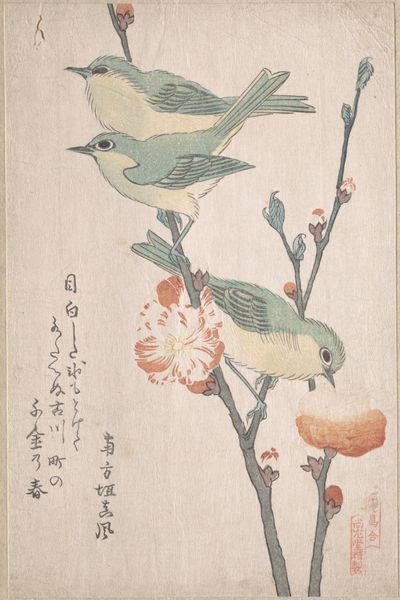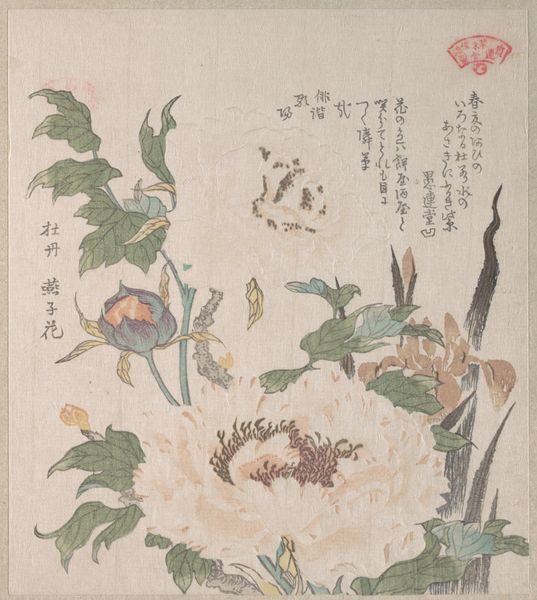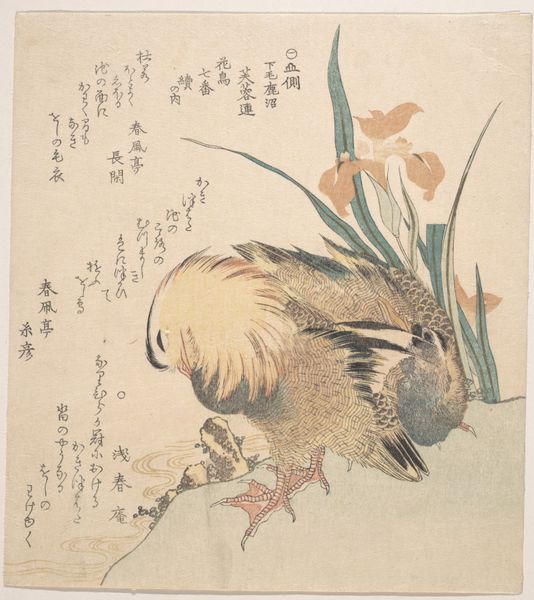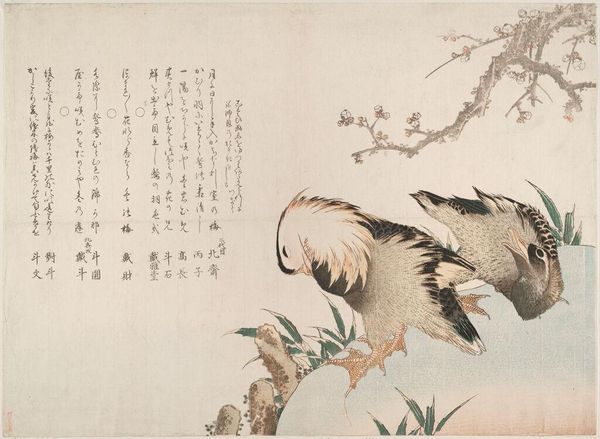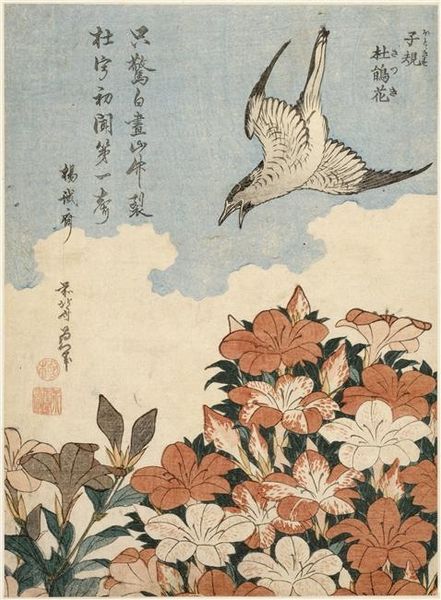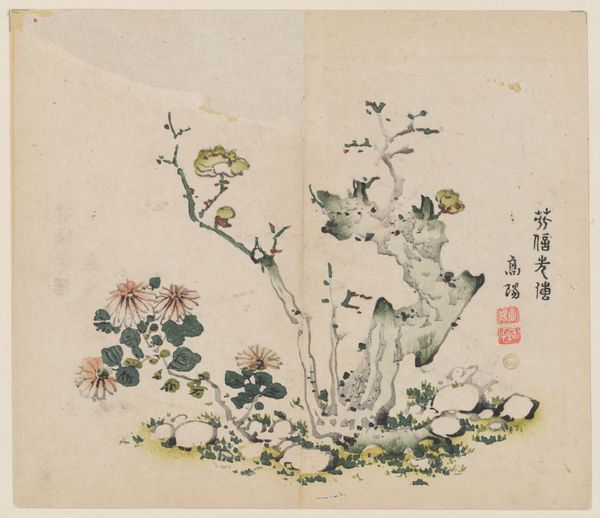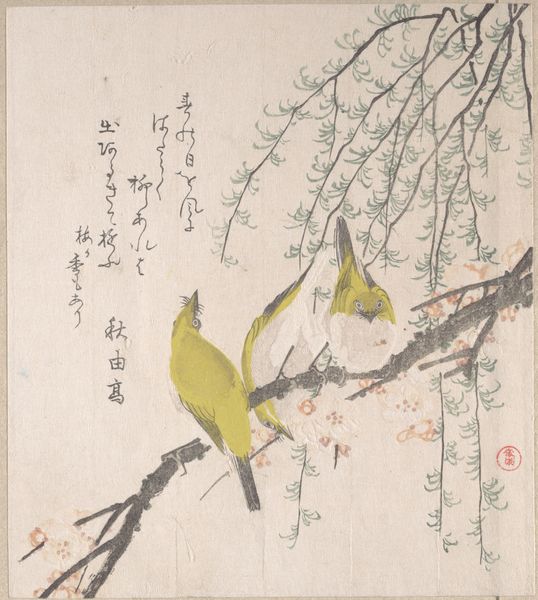
Spring Rain Collection (Harusame shū), vol. 3: Marsh-tits and Crab Apple Flowers 1810 - 1830
0:00
0:00
print, woodblock-print
# print
#
asian-art
#
bird
#
flower
#
ukiyo-e
#
woodblock-print
Dimensions: 8 x 7 3/8 in. (20.3 x 18.7 cm)
Copyright: Public Domain
Curator: Welcome! We’re looking at “Marsh-tits and Crab Apple Flowers,” a woodblock print created by Teisai Hokuba between 1810 and 1830. It’s part of a series titled "Spring Rain Collection" and currently resides here at the Metropolitan Museum of Art. Editor: Immediately, the texture draws me in – you can almost feel the paper and the delicate layering of inks. There's such an unassuming, quiet joy in this little square of a print. Curator: Absolutely. Ukiyo-e prints like this one weren't merely decorative; they were often powerful reflections of societal values and, in Hokuba's case, frequently captured the everyday interactions between the human and natural worlds, celebrating those connections. The crab apple flowers, or *zumi* as they're known in Japan, represent spring and rebirth. Editor: And I wonder about the marsh-tits. The artist surely observed these creatures carefully in the material world to create such distinct form and motion. Are there writings or production notes offering details of the artist’s method? The process of cutting these lines into wood, how he thought about this… Curator: While Hokuba might not be as widely recognized as his contemporary, Hokusai, the intersection of his artistry with popular culture can be studied through the distribution methods and the networks necessary to support this particular visual style. What gender roles, power structures or systems of patronage, for instance, are reflected through their making and their audience reception? Editor: It seems likely, looking closely, that the blocks would be re-inked to add depth, with the intention to allow multiple runs. I want to know who made the paper; where the ink was derived and traded; whether apprentices helped with cutting and printing… These labor practices reveal as much meaning as the content. Curator: Indeed. Beyond simply depicting the natural world, the images subtly underscored the impermanence of life and the necessity for mindfulness in the fleeting present—a reminder that even small birds in blossoming trees are worth appreciating, if only for a moment. The print served to engage the public in reflecting on broader Buddhist ideals, promoting specific ideologies among common people. Editor: Thank you for that reading; understanding those potential deeper societal impacts helps to sharpen my focus. This piece reminds me that looking is a form of labor – our gaze impacts our surroundings.
Comments
No comments
Be the first to comment and join the conversation on the ultimate creative platform.

